Bike Perfect Verdict
Trek’s new Supercaliber rides exactly how you’d want for super efficient XC speed but it’s not as versatile or smooth as longer travel XC bikes and it’s heavier than some too.
Pros
- +
Super efficient pedaling
- +
Firmly fast ride feel
- +
Balanced XC handling
- +
200g lighter than before
- +
Dropper post on every bike
- +
Smart race and servicing details
Cons
- -
Heavier than some longer travel bikes
- -
Multi cable chaos
- -
PF92 BB
- -
Skinny tires on the XX AXS
Why trust BikePerfect
Trek’s Supercaliber has been a super successful racer with both Olympic and World Championship wins to its name. They haven’t disturbed the hidden shock silhouette that makes Trek's best XC mountain bike instantly recognizable either but everything else about the G2 bike - including the unique IsoStrut suspension - has been evolved for an even faster result.
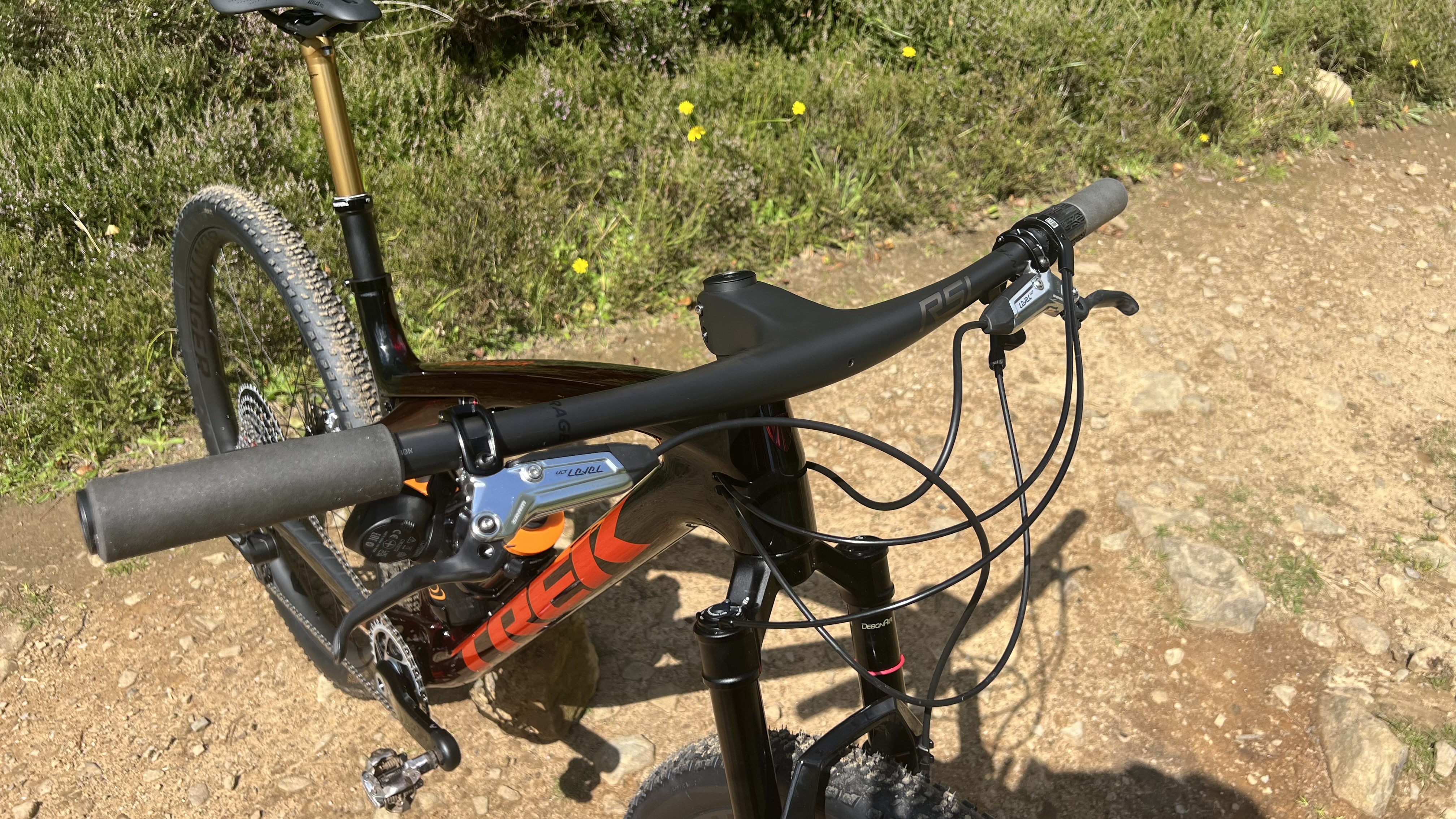
Design and geometry
I’ve already covered a lot of the construction changes and development story of the new G2 in Trek Supercaliber news article, but here’s a quick recap. The OCLV carbon frame looks the same but all the tube shapes have been revised and higher-quality composites used in several sections. The Knock Block steering limiter has gone as Trek’s pro racers generally removed it to get the stem lower anyway and the lightest SLR frame loses the internal cable trunking. That means around a 200g weight saving over the previous Supercaliber frame depending on size.
The super-wide PressFit 92 bottom bracket stays to allow similarly wide seat tube, down tube, and main pivot dimensions to maximize stiffness so the new bike is as rigid as the old one under power. While the PF BB isn’t popular in terms of longevity or quietness Trek’s decision to stick with conventional internal control routing rather than headset-based hiding gets a servicing thumbs up. There are two bottle cages included too although the seat tube mount will only take a standard 600ml bottle even on a large frame.
Geometry is balanced between adding stability and familiarity for the hyper-sensitive biometrics of pro racers or time-served traditionalists. That equates to a 67.5-degree head angle that’s 1.5 degrees slacker than before and slightly longer chainstays, but an only slightly longer reach at 460mm on the large and a middling 74.5-degree seat angle. The bottom bracket height goes up slightly to reflect the increase in travel from 60mm to 80mm and the main pivot also comes up 10mm in the frame.
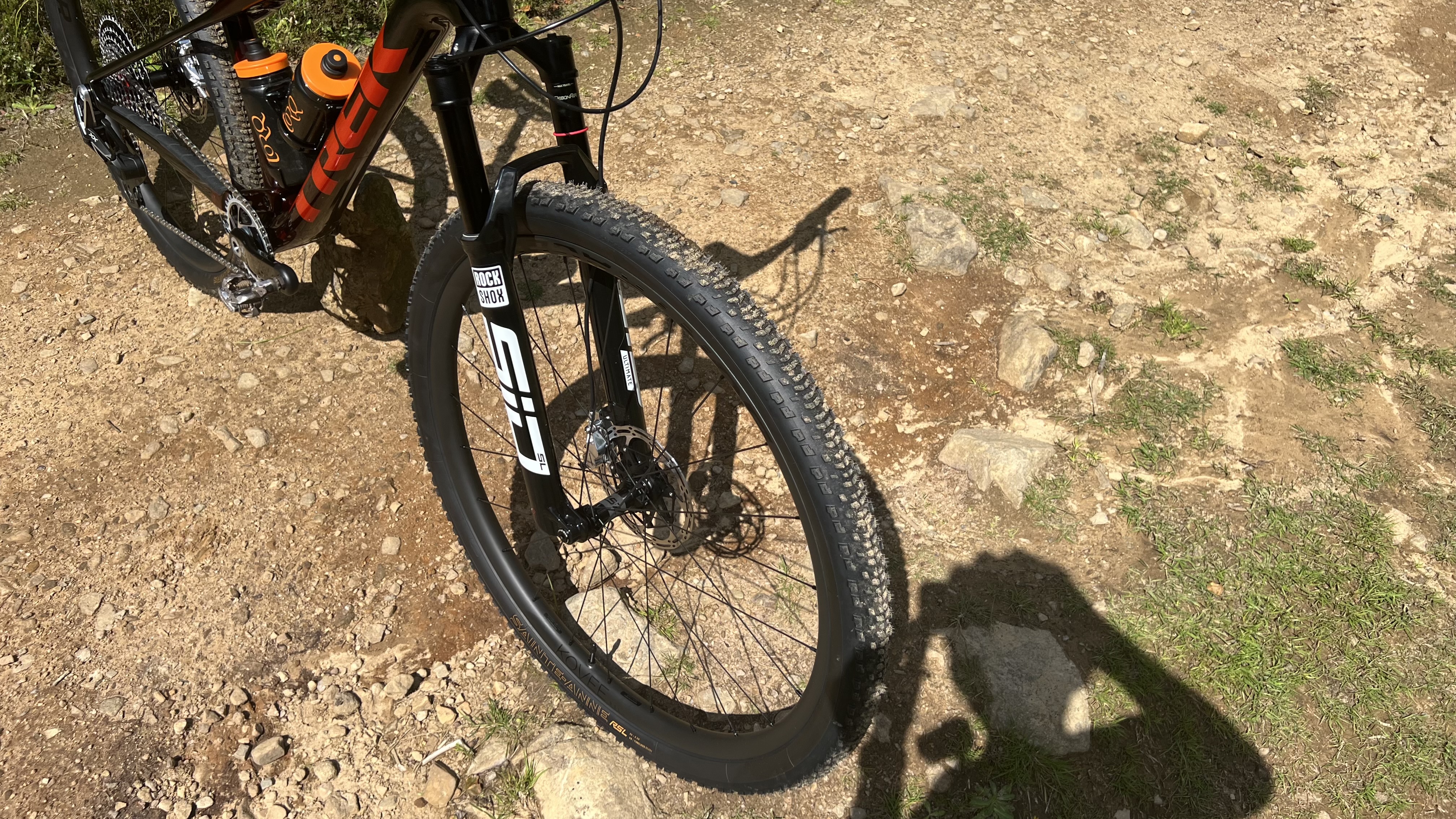
Components and build
The new Supercaliber SLR comes in five complete 9.9 / 9.8 builds - XX, XO, and GX from SRAM plus XTR and XT from Shimano. Then there are SRAM (9.7) and Shimano (9.6) builds on the heavier SL bikes. All bikes get the same ‘IsoStrut’ suspension though which uses a sealed shock tube built into the top of the flex seat stays to ‘milk’ the 38mm shaft bolted into the top tube. For the G2 this is made in collaboration with RockShox using a mixture of SIDLuxe style internals and ZEB fork bushings and seals. The fork is the latest SID SL from RockShox in the maximum 110mm travel option and both fork and shock have lockout settings controlled via a TwistLock grip on the left-hand side of the bar. Stop and go gear is top drawer SRAM with Level Stealth Ultimate four pot brakes and carbon-rich, AXS wireless controlled XX SL T-Type gearing with a 34 tooth chainring.
Trek’s component brand Bontrager provides the -13 degree one-piece carbon cockpit, carbon-railed Aeolus saddle, superlight 1245g Kovee RSL wheels, and new St Anne RSL cross-country tires. The SID SL spec means the XX bike has to use ‘2.2in’ wide (actually 54mm or 2.1in) rubber, while all other bikes get 2.2in (actually 59mm or 2.3in wide) versions of the tire.
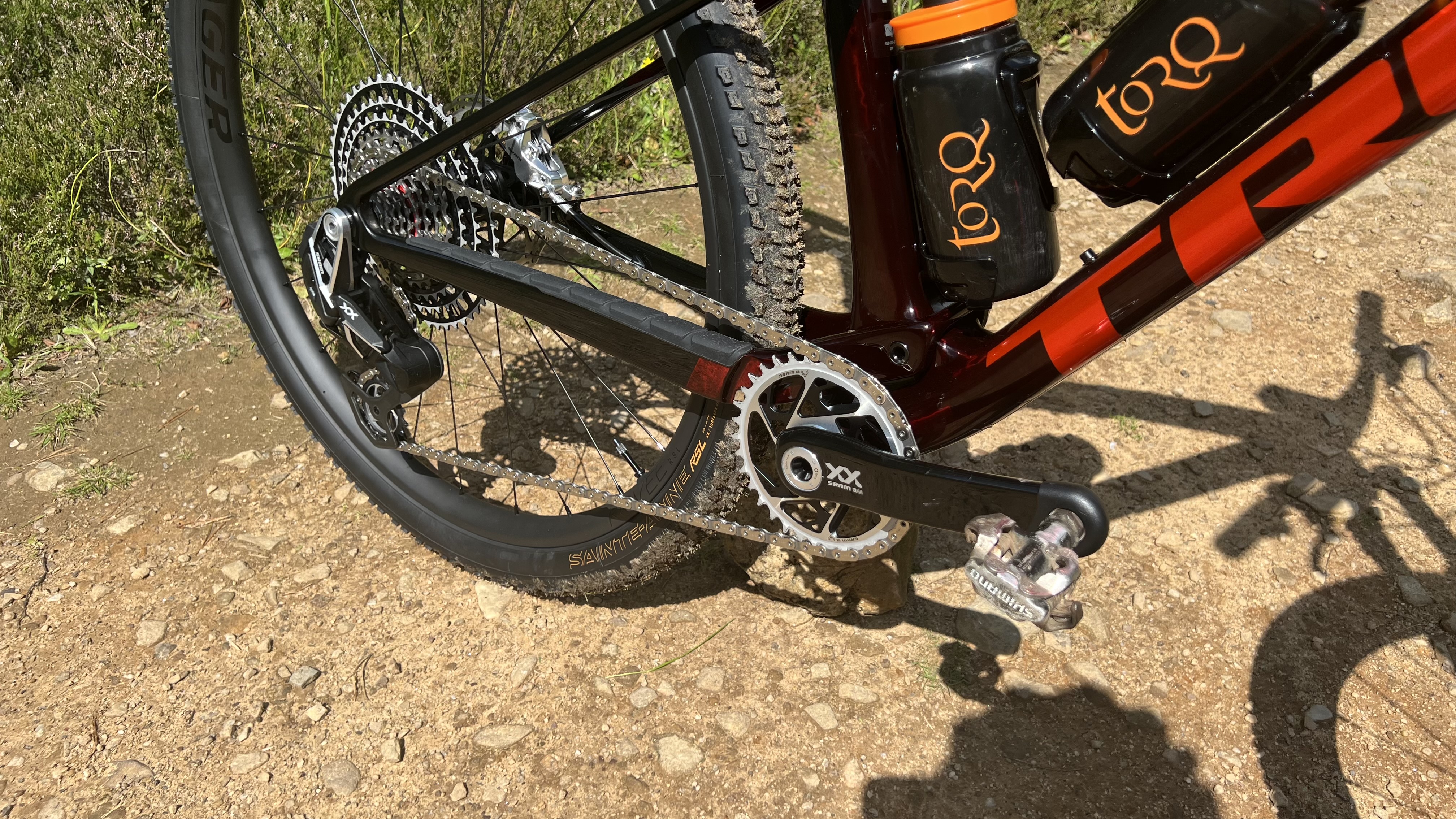
Ride, handling and performance
First things first, let me make it clear that the Supercaliber is a serious race/speed bike. Trek officially allows 100mm and 120mm fork options on either side of the 110mm default to slightly adjust the geometry. Design lead Alex Martin said they’d also ridden the bike with a 130mm fork and chunkier tires for fun. They’ve deliberately not followed the current XC/fast trail trend of creating two bikes out of one by offering a 100mm fork and short shock option and a 120mm fork and longer shock option on the same frame platform.
Even with a 20mm increase in travel, the unique IsoStrut shaft shock is a race damper though. Leverage has been slightly increased, boosting sensitivity and progression in the process, but It’s still a very low pressure (I ran 100-110 psi with a 72 kg loaded rider weight) set-up. Low-pressure shocks always feel ‘sticky’ and that’s compounded by the notoriously tight Zeb bushings on the IsoStrut. Even though Trek individually size the bushings and strut on each bike to find optimal tolerances you need to be patient for them to ease up a bit. Inevitably the more you ride the bike the smoother you think it is as the body adjusts too, but switching back to longer travel conventional XC bikes immediately underlines that this is a skimmer, not a smoother. Even running 30 percent sag to get full travel regularly, you normally only realize that’s happened when you check the travel ring when you stop riding. There’s certainly no sense of sag or wallow from the back end when you’re getting back on the power, coming out of rough sections or lumping through the pockets between roots and rocks and/or when low pedal revs are doing their jerky, janky thing.
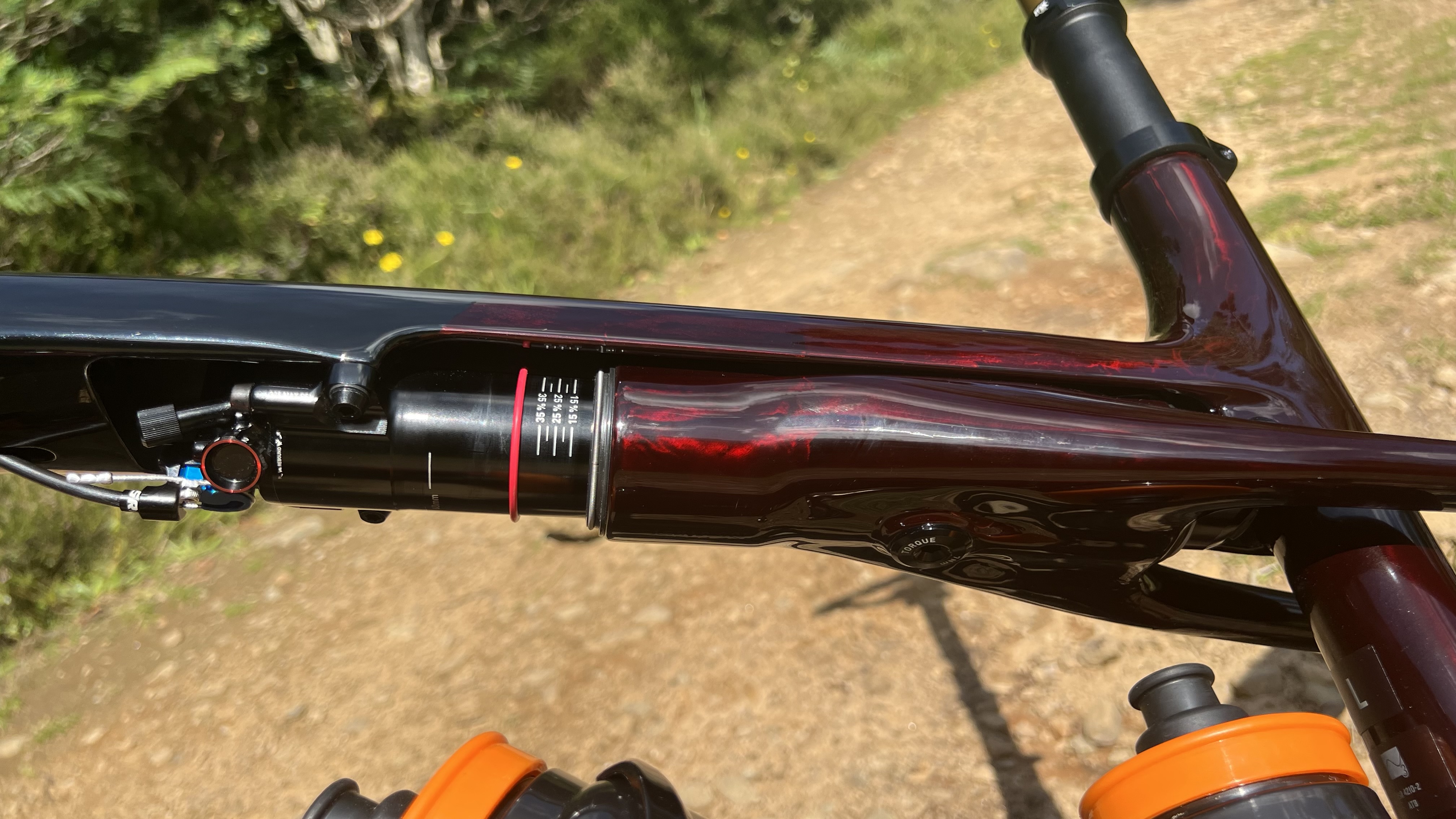
That’s totally fine when you’re on the power, with that extra anti-squat tightening the suspension further so you skip across the top of roots and rocks with just enough movement to stop you from getting choked like a hardtail. It lands decent-sized drops with a lot more control and calm than a hardtail too. The new longer travel, stiffer crown SID SL can handle more hammer than you’d probably expect too. It feels awesome under power-up climbs too where the structural stiffness of the IsoStrut and broad BB frame gives it a real edge against more 3D flexible conventional shock and linkage bikes. Overall sharpness feeds the dilated pupil, hunter vibe that I think a truly dedicated race bike should have, creating an unspoken agreement that you’re both going to go full gas for as long as it takes, even if that’s a lot longer and harder than is comfortable.
The inevitable flip side of this is compromised comfort and traction compared to a more flowing bike. That’s particularly true with the stock 2.2 tires fitted which pretty much eradicates any chance of inserting a save between “Everything is OK - damn that hurts’ moments. Even with 2.4 versions of the St Anne tires fitted to screen out some of the chatter and slither the high Anti Squat scatters gravel and shaves sideways off roots and rocks under power more than a neutral set-up. On the flip side, you’ve got a ton of feedback to know exactly where to apply that power for your own traction control/torque judgments and I’d have that over-depressing, watt muffling mush. It’s a credit to how efficient the bike pedals that I rarely twisted the shock into lock mode and comparing it to the new SID set up ‘Open’ on the Supercaliber feels like ‘Pedal’ on the 3P damper.
The excellent ‘skip across a section at full throttle’ moments of velocity affirmation when you’re fresh or just feeling ferocious are also balanced by the hookups and chokes when you don’t quite hit/maintain ‘skip across’ speed and there’s no extra smoothness or travel to keep you afloat. Even set up soft with the bigger tires there’s no pillowy plush for reducing the shoulder, wrist, leg, and back fatiguing beating that epic rides or longer/rougher descents dish out either.
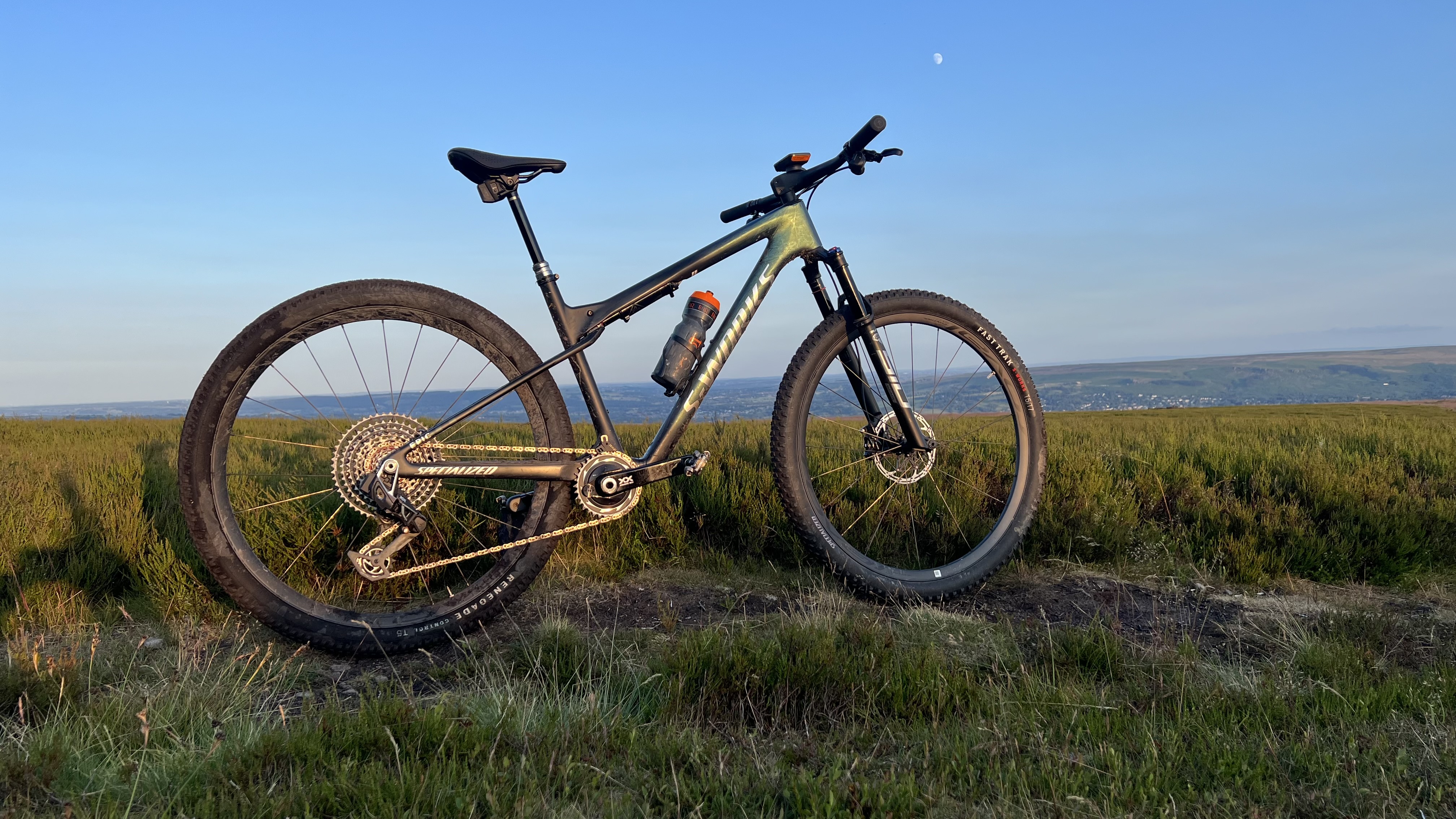
Trek Supercaliber versus Specialized Epic World Cup
Questions on how the new Supercaliber compares to the superficially similar Specialized Epic World Cup started as soon as I posted pictures of the bike on social media, so here's my take. Unsurprisingly it all revolves around the shock and suspension kinematics. That’s because while the 66.5-degree head angle and 73.5-degree effective seat angle of the Epic are a degree slacker on paper, once you’ve added the sag effect of the Trek against the minimal sag Specialized they’re basically the same shape on the trail. There’s only a 5mm difference in the suspension travel too, but how it’s delivered is very different.
Basically, the World Cup uses a unique WCID version of the RockShox SIDLuxe shock where you get to set the negative chamber inflation volume and therefore sag yourself. Even in the ‘Full Gulp’ setting, that’s a minimal amount of sag so the shock feels ‘topped out’ a lot of the time. Add the inertia valve of the BRAIN fork used on every model and that often means an uncomfortable feel when cruising. Specialized have given the bike surprisingly low anti-squat figures though so powerful pedal strokes can still compress the shock enough to cause a noticeable ‘bob’ even in ‘Zero Gulp’ mode. Low anti-squat means once the shock is moving the bike feels very mobile and open. That’s great for smoothness and traction, but it feels surprisingly mushy under power despite the frame feeling structurally taut. As the shock set-up is based on completely deflating the shock there’s no way to change how it feels while riding either.
In contrast, the Trek just feels like an efficiency/stiffness-optimized version of a conventional bike, staying taut under power and moving just enough when needed without ever undermining that muscular, zero-watts-wasted feel. Interestingly while the claimed frame weights are 150g in Specialized’s favor and the complete S-Works has a rigid carbon post, not a dropper, the BRAIN fork means actual complete bikes are within a few grams of each other on the scales, and the Supercaliber doesn’t have a power meter (60g extra).
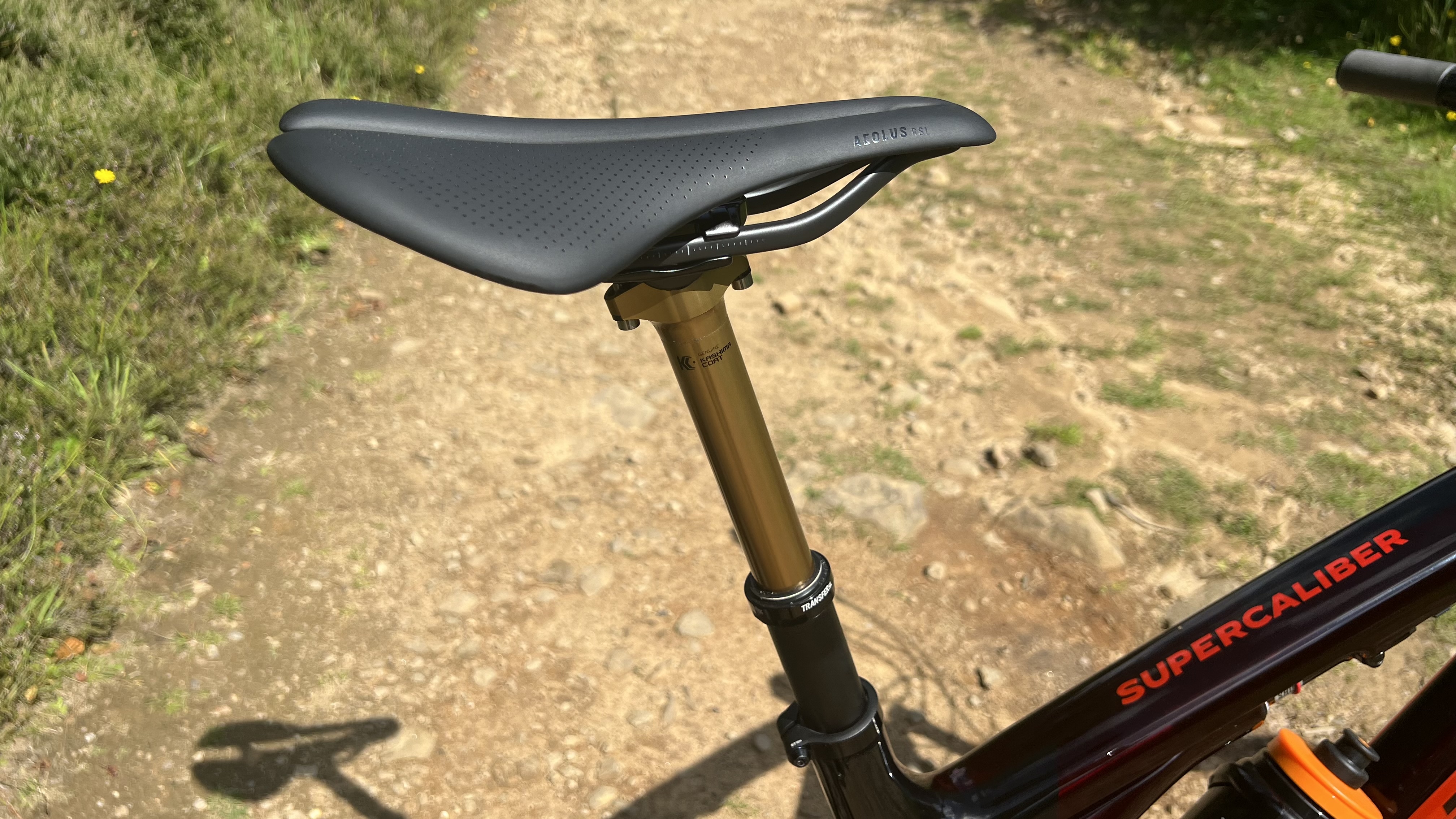
Verdict
So just how super is the Supercaliber? Flick up to the ‘downers’ section at the start and you’ll see me complaining about the busy cable routing, the creak potential of the PF92 BB and the fact that the frame/shock is significantly (for XC heads at least) heavier than more versatile, longer travel ‘conventional’ XC options.
If you’re looking for a bike that is focused on delivering race track speed rather than having one eye on trail saleability though the Supercaliber is a blisteringly fast, pedaling-optimized weapon even by contemporary XC standards. Judging by how well the previous bike sold and how many comments I’ve had asking “I just want to know if it’s a proper race bike?” This lighter, faster, and more aggressive G2 version will be an even bigger success. Running softer with bigger tires should be on the short list of a lot of marathon/epic riders too and I’ve certainly had a serious amount of type 2 fun on it during testing.
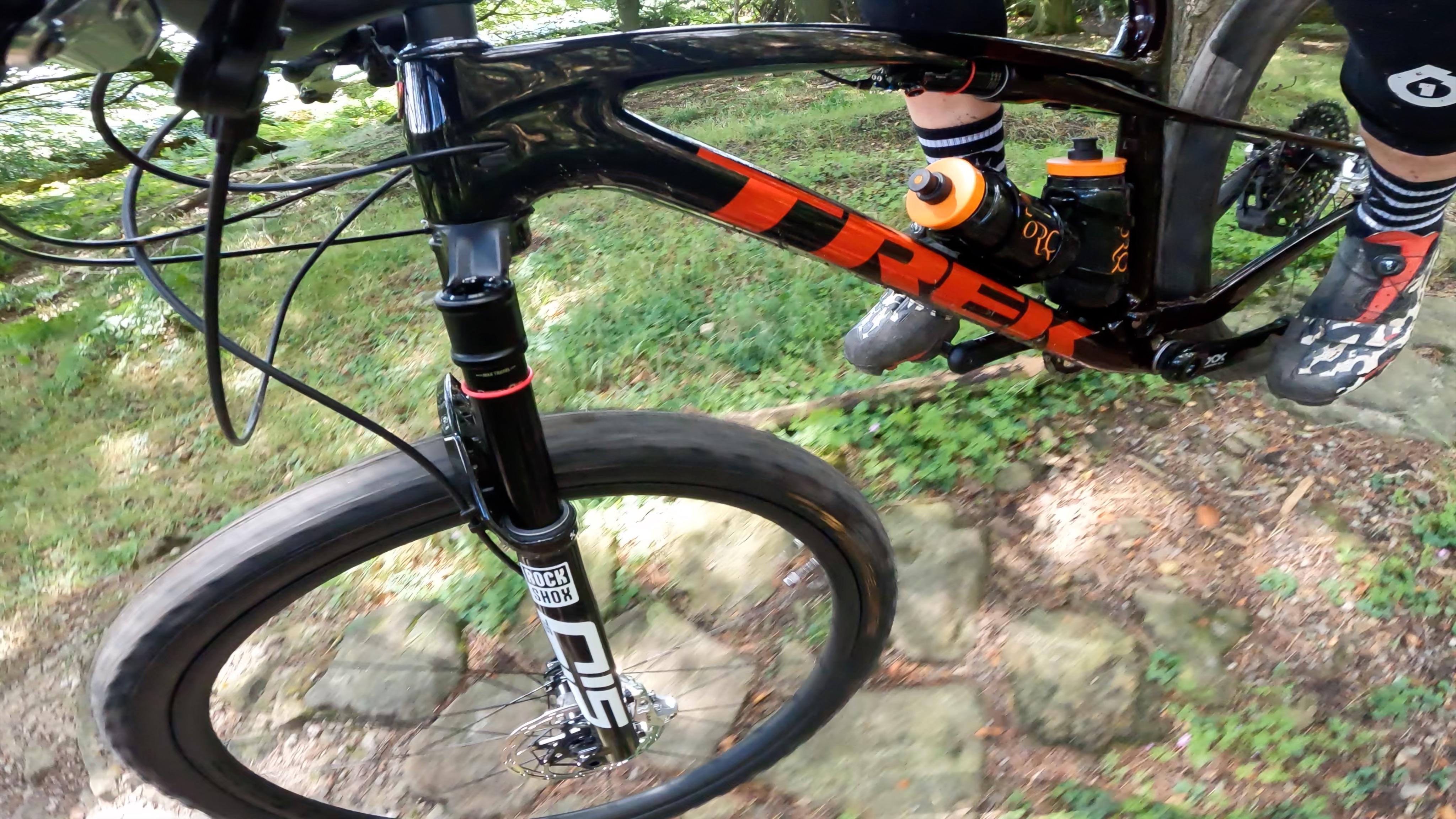
Test conditions
- Surface: Gravel, road, roots, rocks, peat, mud, sand, rock gardens, sketchy steps
- Trails: Blue and red grade trail centre, natural singletrack in the local tech woods and mixed sheep track/double track out in the middle of the moors.
- Weather: Dry to drizzle. 15 - 24 degrees
Tech spec: Trek Supercaliber SLR Gen 2 9.9 XX AXS
- Discipline: XC Race
- Price: $11,699 / £10, 800 / €11,499
- Head angle: 67.5 degrees
- Frame material: OCLV SLR carbon fibre
- Fork: RockShox SID SL Ultimate 110mm travel
- Shock: RockShox/Trek IsoStrut SIDLuxe 80mm travel
- Size: S, M, M/L, L (tested), XL
- Weight: 9.75kg
- Wheel size: 29in
- Chainset: SRAM XX SL 34T, 170mm chainset with DUB PF92 bottom bracket.
- Rear mech: SRAM XX SL Eagle AXS, T-Type
- Shifter: SRAM XX SL Eagle AXS
- Cassette: SRAM Eagle XS-1299, T-Type 12-speed 10-52T
- Brakes: SRAM Level Ultimate 4-piston disc brakes with 160mm rotors.
- Tires: Bontrager Sainte-Anne RSL XR 29x2.2in rear tires
- Wheels: Bontrager Kovee RSL, OCLV Mountain Carbon
- Bars: Bontrager RSL Integrated OCLV Carbon 750mm handlebar and 85mm stem
- Grips: RockShox TwistLoc Ultimate remote with foam grips
- Seat post: Fox Transfer Factory SL 125mm dropper
- Saddle: Bontrager Aeolus RSL, carbon rails

Guy Kesteven has been working on Bike Perfect since its launch in 2019. He started writing and testing for bike mags in 1996. Since then he’s written several million words about several thousand test bikes and a ridiculous amount of riding gear. He’s also penned a handful of bike-related books and he reviews MTBs over on YouTube.
Current rides: Cervelo ZFS-5, Specialized Chisel, custom Nicolai enduro tandem, Landescape/Swallow custom gravel tandem
Height: 180cm
Weight: 69kg

